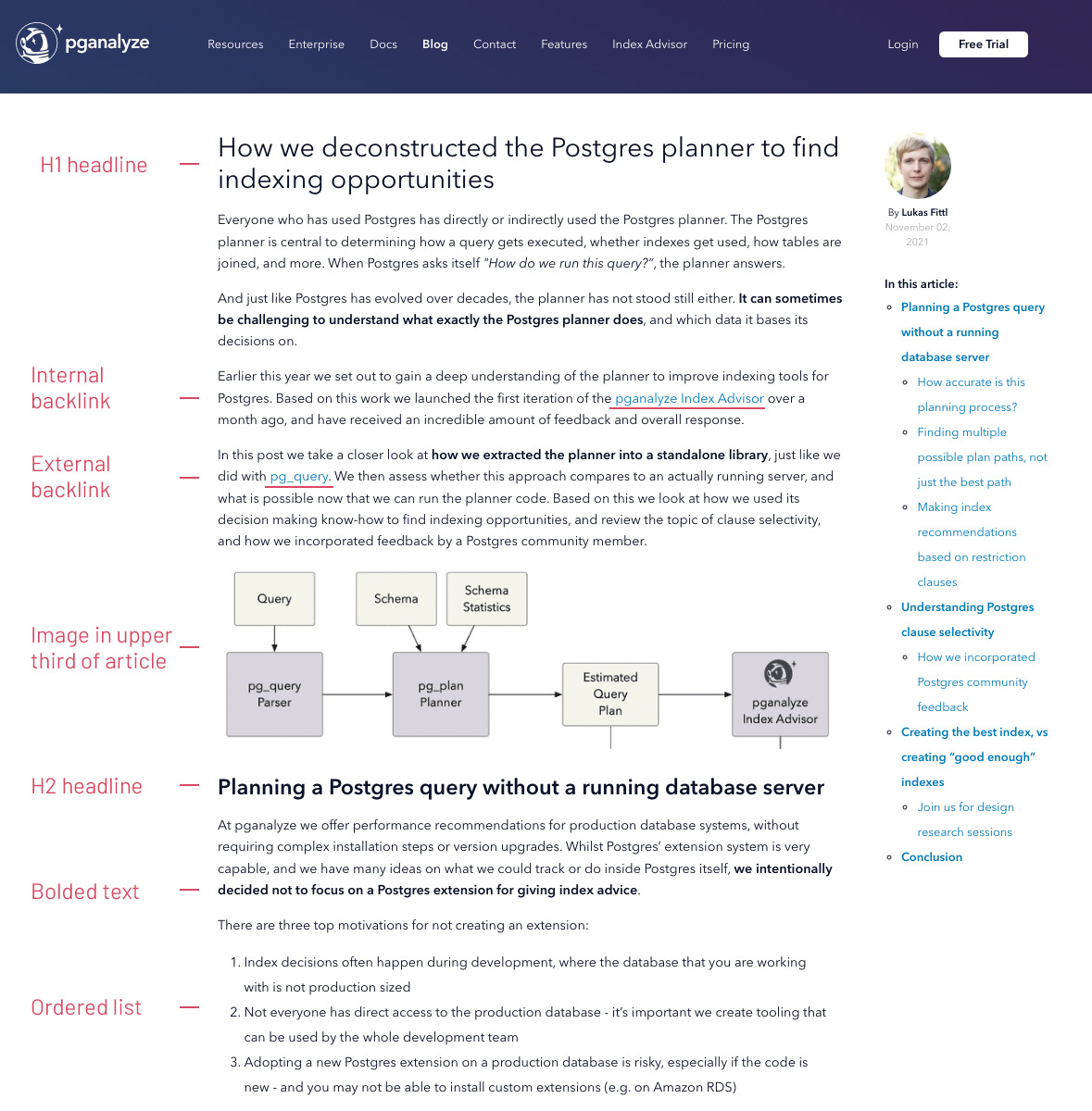Content Setup
In this section, we will walk you through a few best practices on how your page (for example a blog post) should be set up. We’ll talk through elements that should be present on the page, how many words need to be on a page to be considered for indexing by a search engine, and more.
First, let’s have a look at an article that follows on-page SEO best practices:

Example of an article that follows on-page SEO best practices
How you should set up your page: Elements, word count, and more
Let’s walk through the most important steps to give your page the best chance of getting picked up by a search engine. You should try to follow these guidelines on every page you publish, but they are especially important for blog posts and other types of longer form content that is published on a web page.
Main headline and intro paragraph
Your article should start with an <h1> as its main headline.
After the headline, you should have a short introductory <p> paragraph. This introductory paragraph should help readers (and search engines) understand what the rest of the article is about and help entice the reader to read on.
Image in the upper third of the page
Ideally, after this intro paragraph you should include an image (using the <img> HTML tag) that is relevant and eye-catching. Be sure this image has alt text and an alt description as this will help both screen readers and search engines know how it fits contextually into the content.
Sub-headlines
After your image, you should have your first <h2> headline followed by the primary content of your article.
Text styles, lists, quotes, and more
Don’t forget about readability! Use short paragraphs, ordered lists, bold and emphasized text, backlinks to relevant sources, and block quotes for direct quotes. You will learn more about internal and external backlinks later in this course.
Word count
Your article MUST have more than 500 words to be deemed “valuable” by Google. Google treats content with less than 500 words as “low effort and low quality” content, and the sweet spot for typical articles is at least 1,200 words. The reasoning for this being that it’s very likely that there is another resource talking about the same topic, but in more detail - “more detail” meaning “in more words”. As “more detail” can be deemed “more helpful to the reader”, Google will prefer those pages with more words.
For pillar pages (primary traffic drivers aimed at more competitive keywords) you should aim for 5,000 to 8,000 words. These are often used as “umbrella articles” in a topic cluster because these articles can include information from five or more smaller articles in one. If you’re interested in learning a framework on how to set up topic clusters check out our “Keyword Audits and Content Clusters” course module (coming soon).